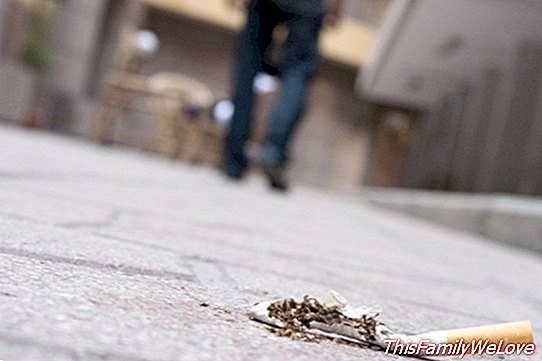With tobacco do not be passive: effects of environmental smoke

Epidemiological studies on exposure to tobacco smoke in children associate its harmful effects to an increase in respiratory diseases, otitis, rhinitis, asthma and sudden death, as well as an increased risk of intrauterine growth retardation, abortion, deficit of cognitive functions and behavioral, worsening lung function and exacerbation of cystic fibrosis.
During the pediatric stage it has also been associated with the development of both childhood and adult cancer. However, although more and more parents are aware of the risk of inhaling smoke for their children, and do much to avoid it, there are still false myths about what is risk and what is not related to environmental tobacco smoke.
False myths about the risk of tobacco smoke
There is a bad perception of risk between parents and mothers with the following FALSE myths:
1. If I smoke in the car when children are not there is no problem: FALSE
2. If I smoke with the window open, there is no problem: FALSE.
3. If I smoke in another room or with the window open it does not reach the children: FALSE.
4. The electronic cigarette does not contain nicotine or toxic substances: FALSE
Data related to environmental smoke
- 50% of children and adolescents in Spain are exposed to environmental smoke snuff in places where they should be more secure: home, car, play areas, school and leisure spaces.
- 27% of adolescents aged 14-18 have smoked in the last month, a little more girls, and 20% have tried electronic cigarettes. 26% of adolescents have also used cannabis in the last year.
- Smoking causes a negative economic impact on families, with the poor smoking the most. It supposes an annual loss of 800 to 2500 € in the families, reason why it contributes to take to generate a vicious circle of poverty.
- 88% of adults daily smokers started their addiction in the infant-juvenile stage. Half of them will die of diseases related to smoking.
- Many of the adult chronic diseases related to smoking were already present subclinically in the pediatric stage.
- Smoking (active or passive) is a chronic disease preventable and more easily treatable in the pediatric stage than in that of adult medicine, when the addiction is established.
- The related pediatric diseases and the degree of evidence appear in the attached triptych.
Guidelines to prevent smoking
In the pediatric consultation:
1. It is necessary to increase theoretical and above all practical training to address the epidemic of smoking in pediatrics and to include smoking as a key element in school environmental health programs.
2. Consider the prevention of smoking and ask about the exposure or use of tobacco in a cross-cutting way in the programs and consultations of children and adolescents.
3. Carry out the smoking diagnosis of parents, mothers or adolescents, manage and treat dependence, including different methods of individual, telephone and group intervention.
4. Implement systems to identify, offer brief advice (verbal and written), treatment and specific recommendations.
5. Do not recommend the use of nicotine electronic devices to treat dependence on smoking.
6. If you fail to eliminate the source of tobacco smoke exposure in the family, offer verbal and written advice to reduce exposure to second-hand smoke.
In Health policies:
1. Provide funding and support to programs for the control and prevention of smoking in Pediatrics and School Environmental Health.
to. The level of scientific evidence is very consistent at this point. Guarantee and facilitate that everyone who needs it has access to a program of prevention and control of smoking is key.
2. Consider the financing by the public system of specific therapies against smoking. They have proven to be cost-effective, and should be a priority for governments and private sectors. In part, it should be financed by the tobacco industry.
3. Decrease the subliminal presence in the media and audiovisual media of smoking, increase restrictions.
4. The promotion and sale of electronic nicotine systems should be prohibited.
to. The content analysis of e-cigar aerosols has shown numerous toxic and irritating substances, even carcinogens. Formaldehyde, acetaldehyde, acrolein, volatile organic compounds such as toluene, xylene, tobacco-specific nitrosamines, heavy metals such as cadmium, nickel and lead, PM2.5 particulate matter, 1-2 pronediol, glycerin, nicotine and numerous aromatic hydrocarbons have been detected.
5. Prohibit all 'flavors' and 'aromas' in the different use of tobacco and nicotine devices.
to.The use of 'flavors' and 'aromas' among adolescents has been associated with an increased risk of addiction and progress to a daily smoker.
6. Incorporate smoking into the basic competencies of school environmental health, with all its harshness and reality.
7. Increase the price of tobacco. For every 10% increase in the price, an initial decrease of 4.3% is associated with 22%.
8. The legal minimum age of initiation should be extended to 21 years.
9. Expand the prohibitions on smoking and the infiltration by environmental tobacco smoke in the common spaces of community buildings, playgrounds and children's leisure areas, sidewalks of schools and cars even if children do not go.
10. Consider any electronic device or e-cigarette with the same restrictions / considerations as other forms of smoking.




